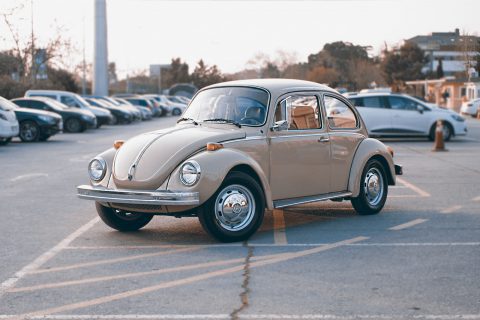Car Insurance: The Newbie’s Guide

Car insurance can be a frustrating, confounding universe of confusing options and endless numbers. It’s a high-pressure purchase, too. The law requires you to have it, but when you’re shopping around it’s usually because you just bought a car, and most people aren’t typically excited about throwing even more money around after they’ve just purchased a vehicle.
So we’ve done the work for you—here’s a comprehensive list of different kinds of car insurance, along with what they’re for and whether it’s a good idea to pick them up or whether you can skip them.
Liability Insurance
Let’s get this out of the way: You absolutely need this. When people talk about being required by law to have car insurance, liability insurance is what they’re talking about. This insurance goes to help cover medical costs and property damage to other peoples’ vehicles in the event that you’re at fault for an accident. (It won’t go toward helping you or anyone in your car.)
The coverage is usually presented as three numbers that stand for thousands of dollars. (For example: 100/300/75). Those numbers represent how much your insurance will pay for three things. The first is the coverage for bodily injury per person. In this example, each person would be eligible for $100,000 in coverage for expenses related to their injuries.
The second is the total limit for bodily injury. In this example, the limit of $300,000 means that three people can max out the coverage, but if more people than that are hurt, then you’d better start hoping they don’t all need the maximum amount of coverage. The third number is the property damage liability. In this example, you can wreck $75,000 worth of cars and buildings before your insurance stops paying. Get an Instant Auto Insurance Quote from Allstate here.
Every state requires a different minimum amount of car insurance. An insurance agent will know what that amount is, but you need to make sure you’re either at or over it. Things to consider when picking liability coverage include how much you drive (more driving = more chances for accidents) and how much you stand to lose if you get sued.
If you have a lot of assets – a nice home, money in the bank, etc. – and you don’t have enough car insurance to cover the people who were injured in the accident, they could sue. If you don’t have anything, they could still technically sue, but they’re less likely to get awarded anything from you.
Personal Injury Protection
Personal Injury Protection covers you if you’re hurt in an accident that where neither party is determined to be at fault. Currently, 12 states (and Puerto Rico) require drivers to have this. It makes sense – if you’re in an accident and the other person wasn’t technically responsible, their insurance isn’t going to give you any money. They didn’t do anything wrong to merit a payout. Even if it’s not mandatory where you are, it makes sense to at least consider.
Uninsured/Underinsured Motorist Protection
Uninsured/Underinsured Motorist Protection can be important. It pays out in case you’re hit by someone who doesn’t have enough car insurance themselves to cover your damages. Say some high school kid rear-ends you and is clearly at fault. If the kid doesn’t have car insurance, you’re stuck with whatever medical bills you may have. And sure, you can sue the family. But if they don’t have any money, or an expensive house or car or anything worth seizing to cover your costs, then all you’ve done is rack up lawyer fees for both sides on top of your medical bills.
And while the penalties for driving uninsured means the person who hit you can wind up losing their license and registration, that doesn’t pay for your hospital stay. The District of Columbia and 19 states require you to have this kind of coverage. If your state doesn’t require it, then here’s a stat to remember: 12.6% of American drivers don’t have insurance. That means if you get hit, you’re taking a one-in-eight chance that the other person doesn’t have car insurance. So this comes down to whether you’re willing to accept a one-in-eight risk.
Collision Insurance
While liability insurance covers the other person when you’re at fault in a car accident, collision insurance protects you, your car, and the people in it. This isn’t typically required for everyone to have, but many states require it if you don’t own your car outright – that is, if you still owe money on the lease or loan.
If you crash into another vehicle, or into something that doesn’t have car insurance, like a tree, this pays out. If you swerve to avoid a squirrel and roll over, this pays out.
Comprehensive Insurance
Comprehensive insurance is just what it sounds like – it covers just about everything that isn’t a collision. If a rock falls on your car, Wile E. Coyote-style, this protects you. If your car gets swept up in a tornado to Oz, if an angry ex-bestie sets your car on fire, if somebody steals it, if a bobcat sits on the hood and leaves claw marks and a dent…well, you get the picture.
This is rando insurance. Like collision, it’s not usually required by the state, but if you still owe money on a vehicle, then it might be required.
Gap Insurance
If you still owe a lot of money on your car through a loan or a lease, gap insurance can be helpful. If your car is totaled, gap insurance pays the difference between what your collision insurance pays and what you still owe on your car. It makes sure that you don’t wind up financially in the hole in an accident.
If your comprehensive and collision coverage are really good, you may not need this. If you don’t owe a lot on your car, you probably don’t need it, either. But it’s a good thing to be aware of.
Last modified on January 31st, 2018






Show Comments +